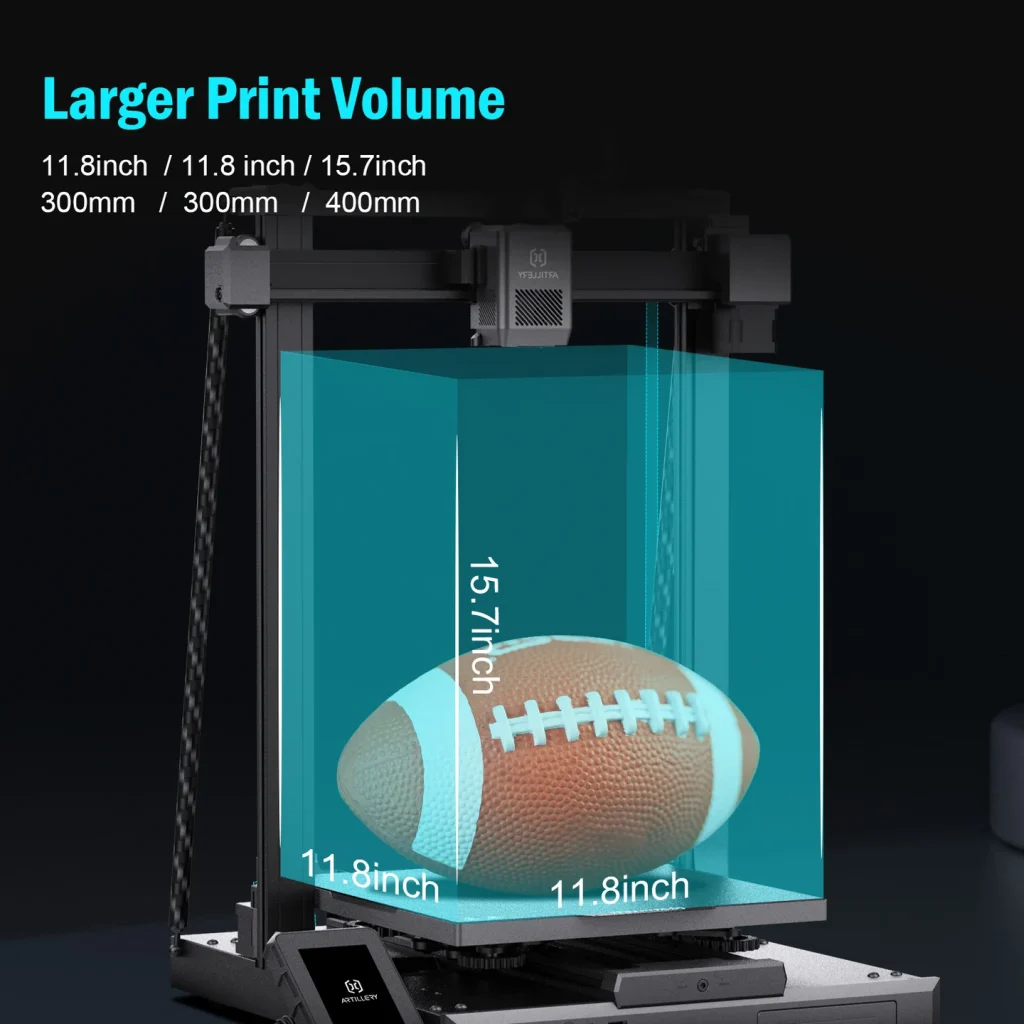Meet the Artillery Sidewinder X3 Plus—a large-format 3D printer engineered to push the boundaries of speed, volume, and reliability. Aimed at hobbyists, educators, and prosumers, this machine builds on Artillery’s reputation for high-value 3D printers. In this in-depth review, we’ll dissect its features, performance, and real-world usability to help you decide if it’s the ultimate addition to your workspace.
Artillery Sidewinder X3 PLUS, the best 3D printer for beginners and experts. It has features like high speed 3d printing at 300mm/s and large build volume of 300*300*400mm, unleashing your…
Related internal pages:
- t300-3d-printer/
- artillery-sidewinder-x4-plus/
- anycubic-kobra-plus-3d-printer-review/
- creality-ender-3-s1-plus-3d-printer-review/
- t500-3d-printer/
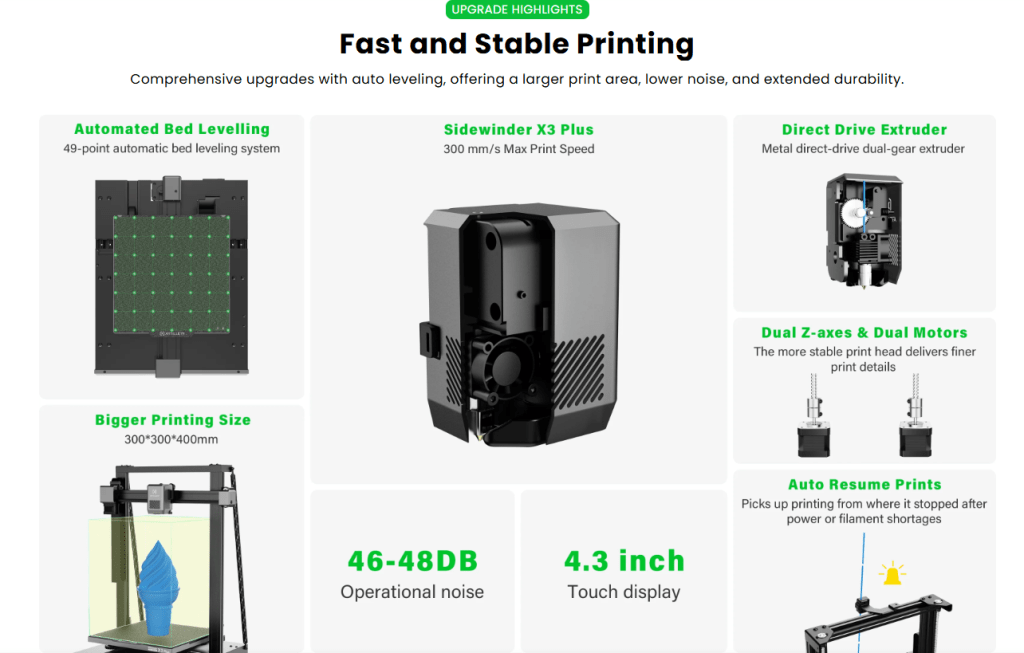
Unboxing and Setup: From Box to First Print
Right out of the box, the Sidewinder X3 Plus arrives largely pre-assembled, packing a streamlined setup that gets you printing in no time. You’ll uncover a pre-built printer, a versatile spool holder, an intuitive filament sensor, a handy stash of spare parts (like nozzles and belts), and a comprehensive toolkit—so you’re fully equipped from day one.
Moving on to assembly, it’s refreshingly minimal: just secure the gantry to the base and connect the clearly labeled cables. Most users breeze through this in under 30 minutes, thanks to the detailed guide that turns beginners into pros without the usual head-scratching.
Finally, calibration feels almost effortless. The automatic bed leveling (ABL) system scans the bed in seconds, making manual tweaking a relic of the past. This means you’ll spend less time fine-tuning and more time bringing your ideas to life—smoothly and accurately.
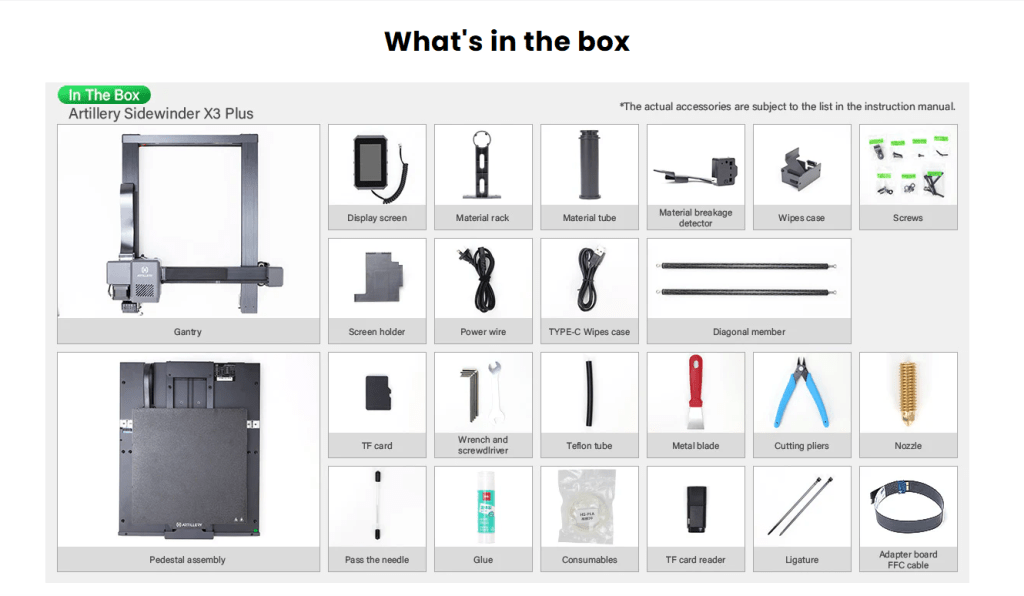
Key Features and Specifications: What Sets the X3 Plus Apart?
From the moment you glance at the Artillery Sidewinder X3 Plus on their site, it’s obvious this printer packs a punch without overcomplicating things. At $499, it combines substantial capabilities with user-friendly features that I’ve come to appreciate during my own sessions. Below, I’ll break down the highlights, drawing on the official details and adding a bit of real-world context.
Massive Build Volume: Room to Stretch Your Ideas
One glance at the 300x300x400mm print area, and you get why this stands out in the budget crowd—it’s tailor-made for ambitious stuff like towering sculptures, multi-part batches, or life-size prototypes, all without forcing you to split files. What really anchors it is the beefy aluminum extrusion frame, which soaks up vibrations during those quick runs, ensuring every layer lands steady and true. Suddenly, “too big” isn’t in your vocabulary.
High-Speed Printing Capabilities: Fast and Fuss-Free
Clocking a max of 300mm/s, this setup lets you prototype in a flash, all thanks to the 32-bit motherboard and those whisper-quiet stepper drivers that keep things under 48dB—even when you’re cranking it up. For the tinkerers out there, Klipper firmware compatibility means you can unlock even snappier, more intuitive prints with a simple swap. That said, the out-of-the-box performance already feels plenty zippy for most daily grinds.
Advanced Extrusion System: Tackling Flex and Heat Like a Pro
The direct-drive Titan extruder changes the game for tricky filaments—think TPU that feeds smoothly, with fewer clogs and spot-on retractions that minimize stringy messes. Coupled with the all-metal hotend that can push up to 300°C, it handles demanding materials like ABS, Nylon, or PC with ease, requiring no extra tweaks. It’s the sort of backbone that turns potential headaches into straightforward successes.
Intelligent Bed Leveling & Heating: Precision Without the Sweat
Auto bed leveling shines here, utilizing a 49-point strain sensor to scan the flexible PEI surface in mere seconds—delivering a flawless mesh map that eliminates the need for old manual fiddling altogether. Meanwhile, the AC direct-drive heated bed surges to 110°C in under two minutes, locking down adhesion for those expansive prints and keeping warps at bay. For large-scale jobs, this combo feels like a quiet lifesaver.
Smart Features & Connectivity: Keeping You Connected and Calm
Every day, smarts abound: the filament runout sensor hits pause if supplies dwindle, while power loss recovery picks up right where a blackout left off. Connectivity gets a boost too—WiFi, Ethernet, or USB options let you monitor jobs through the Artillery Box app, adjust on the fly from your phone, or shuttle files without cables getting in the way. These touches add up, making long sessions less of a worry.
Design & Usability: Built for Real Hands-On Tweaks
Modularity takes the edge off maintenance, with tool-free belt tensioners, an easy-access hotend for swaps, and a magnetic quick-release build plate that pops off for effortless cleaning. Top it off with the integrated LED lighting that bathes the chamber in a soft glow, so you can check progress without straining your eyes. It’s these details that make the whole thing feel approachable, not overwhelming.
All in all, the X3 Plus weaves these elements into something reliable and rewarding, whether you’re just starting out or scaling up. But how does it hold up when the prints actually roll? Let’s shift to some hands-on performance notes next.
Reliable Results Anytime, Anywhere.

High-Temperature Platform for Versatile Printing
The heated platform can reach temperatures of up to 100°C, providing excellent adhesion for a variety of materials, including PLA, ABS, and PETG. This ensures stability and reduces warping during printing, even for more challenging filaments.
Dual-Gear Direct-Drive Extruder for Precision
Equipped with a dual-gear direct-drive extruder, this printer ensures smoother filament feeding and improved extrusion accuracy. Perfect for flexible filaments like TPU, it minimizes clogging and enhances overall print quality.
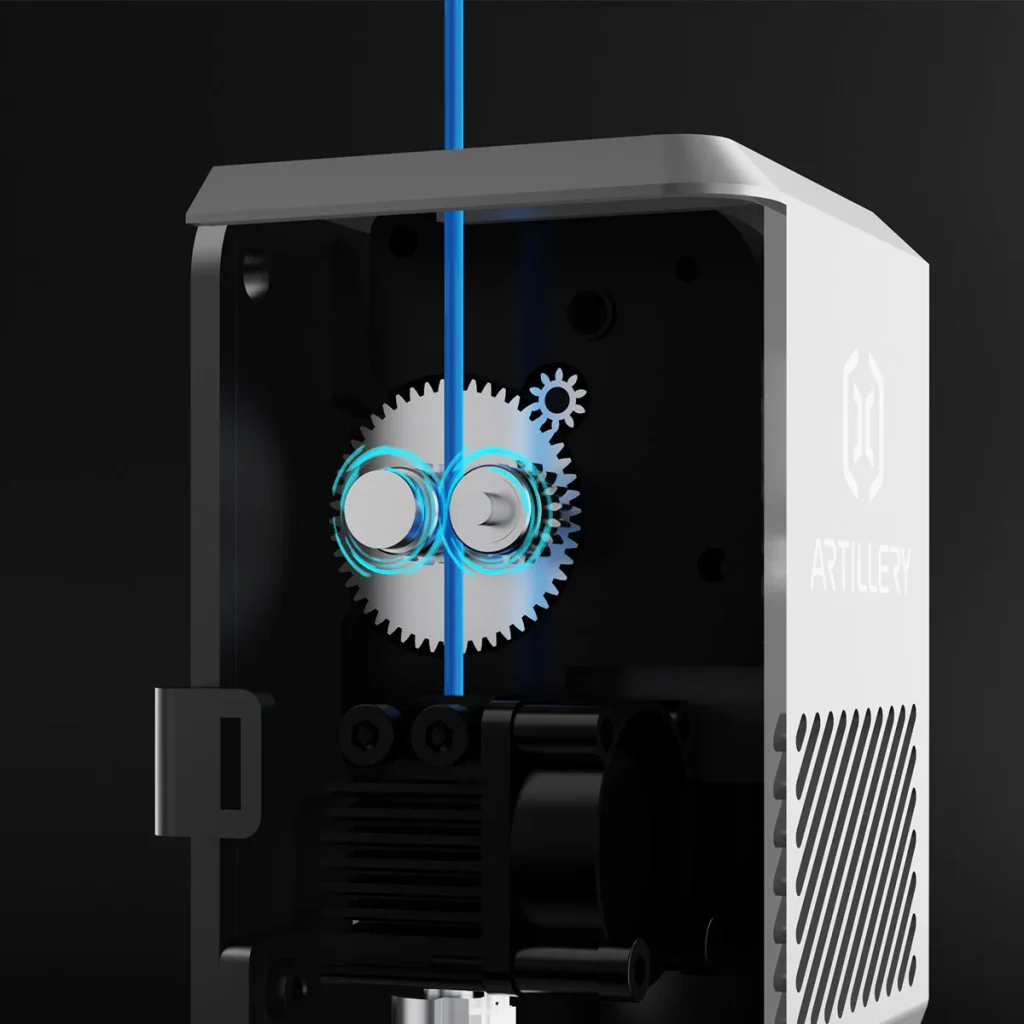
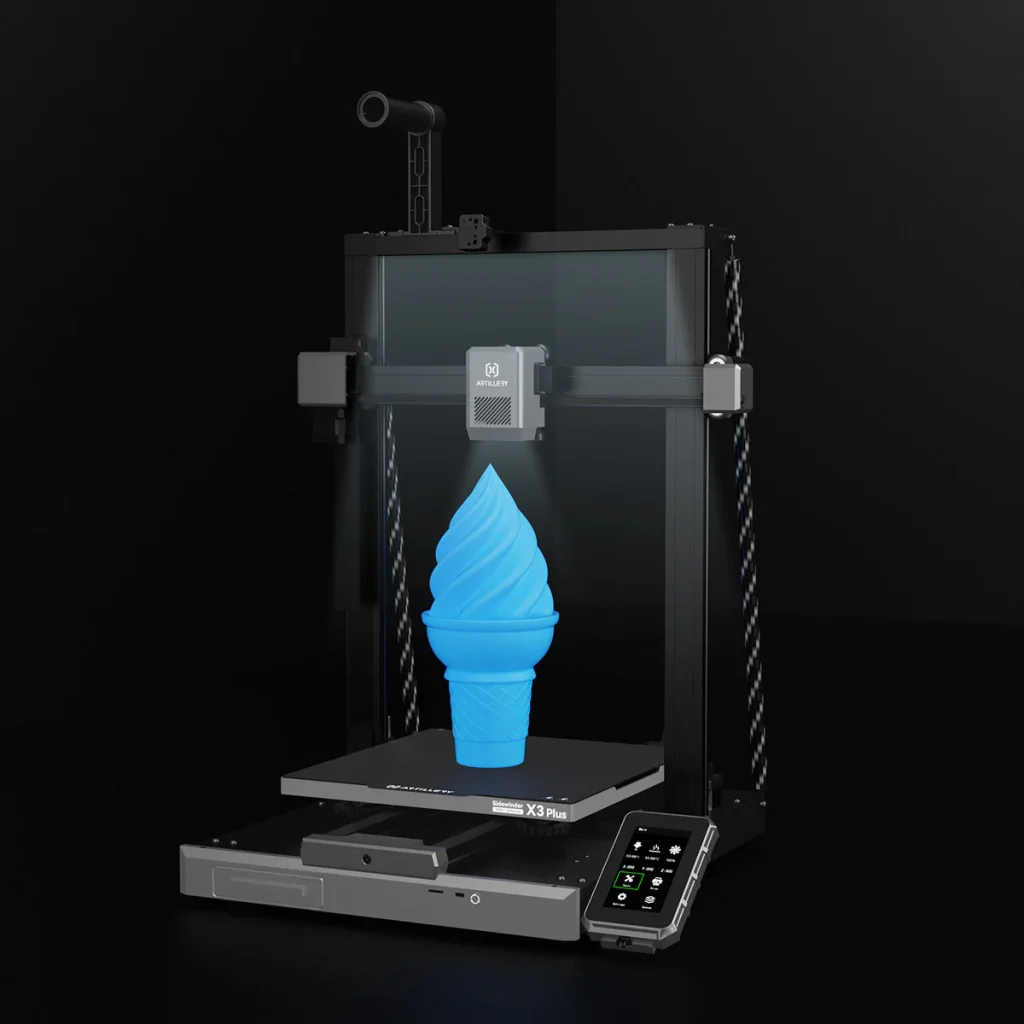
Built-in LED Lights for Night-Time Monitoring
A thoughtfully integrated LED lighting system on the gantry illuminates the print area, making it easy to monitor printing progress, even in low-light environments. Enhance your printing experience with clear visibility at all times.
Dual Z-axes & Dual Motors
Enhances printer stability, achieving smoother layer alignment and higher precision for ideal larger-sized prints.
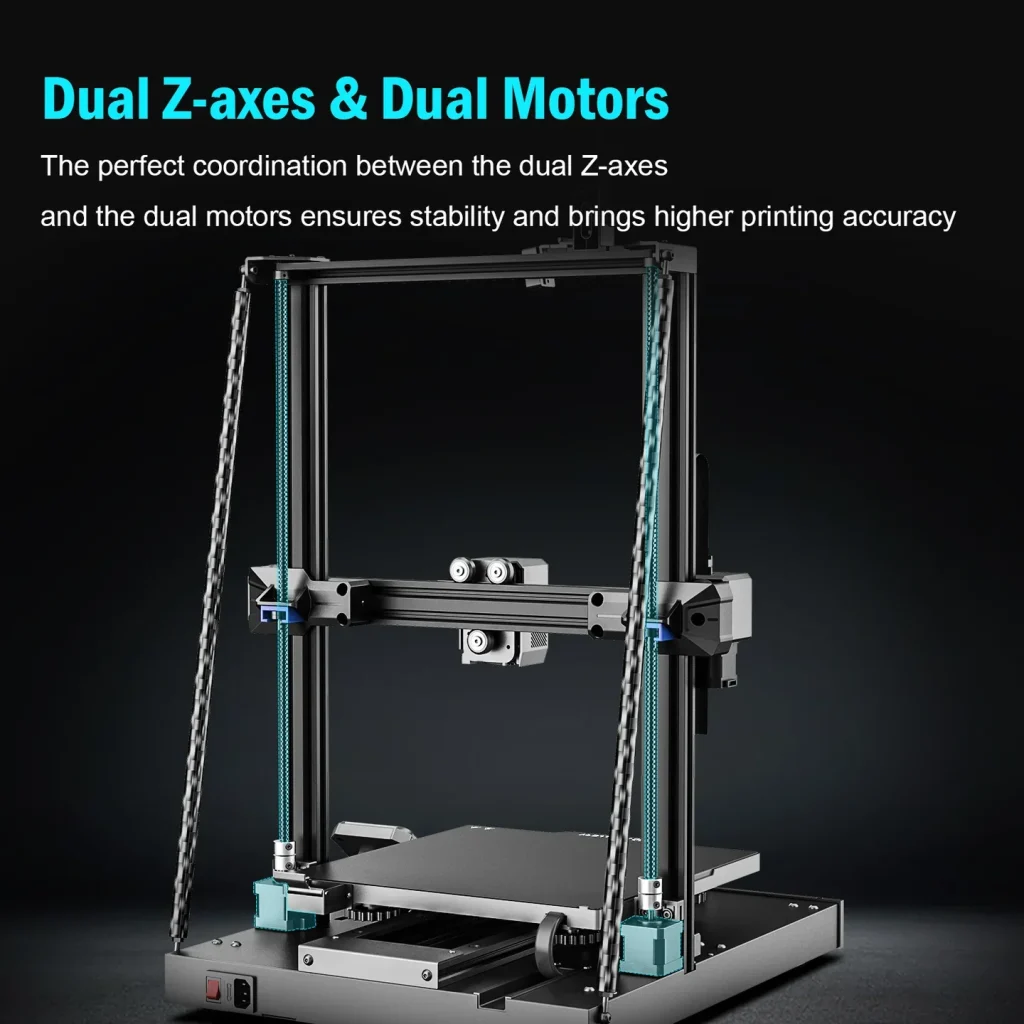
Sidewinder X3 Plus SPECS
| Item | X3 Plus Specification |
|---|---|
| Frame material | Metal+ABS |
| Net Weight | 16.6kg |
| Package Size | 738*518*225mm |
| Printing Size | 300*300*400mm |
| Max Printing Speed | 300mm/s |
| Suggested Speed | 150-200mm/s |
| Nozzle | 0.4mm |
| Filament | 1.75mm |
| Filament compatibility | PLA, ABS, TPU, PETG |
| MAX. nozzle temperature (Original) | 300°C |
| Printing Platform | PEI Magnetic Spring Steel |
| MAX. hotbed temperature | 100°C |
| Hotbed Power Supply | DC36V-300W |
| Machine Power Supply | DC24V100W + DC36V300W |
| Motherboard Type | STM32-bit |
| UI language | support 8 languages |
| Connection Method | TF card/TYPE-C cable |
| Touch Screen Size | 4.3 inch full Colour touchscreen |
Performance Testing: Speed, Quality, and Reliability
I couldn’t resist giving the Artillery Sidewinder X3 Plus a proper workout over a couple of rainy afternoons—cranking speeds, juggling spools, and timing those endless jobs. What came out? A machine that surprises with its grit, blending the official promises with real grit under pressure. Here’s how it fared.
Print Quality: Clean Lines, No Matter the Rush
Settling into a speed of 60–100mm/s feels just right, where details emerge sharp and those pesky layer lines fade to almost nothing. Take my standard Benchy run—it surfaced with hulls like polished glass and overhangs that defied gravity, no droops or drama. Even when I nudged it toward 150–200mm/s for a quicker spin, ringing or ghosts barely whispered in, all credit to that beefy frame and the drivers dialed in just so. It’s the sort of steadiness that sneaks up and wins you over.
Material Versatility: Handling the Usual Suspects (and Then Some)
For the crowd-pleasers, it shines without trying—PLA spits out fast and flawless, PETG stacks up sturdy as can be, and TPU coils into flexible bits that actually hold their shape. Now, venturing into ABS or PC territory? It manages decently in a pinch, but cooler air currents can coax a curl at the edges, so pairing it with that optional enclosure add-on makes all the difference. A quick swipe of glue helps, too, turning potential headaches into no-brainers.
Reliability: The Long Game, No Sweat
Endurance-wise, this thing’s a quiet champ. I strung together a 72-hour slog on a hefty model, and it powered through without flinching—temps locked steady, no surprise halts or feverish warnings. That kind of backbone comes straight from smart thermal controls and parts that feel built to last, not just look good in a box.
All in, these trials paint the X3 Plus as a dependable sidekick—nimble yet tough, with few stumbles along the way. Of course, nothing’s perfect; the ups and downs come next.
Pros & Cons
✅ Pros
- Blazing speed without sacrificing detail.
- Spacious build volume for ambitious projects.
- User-friendly features (ABL, filament sensor) reduce downtime.
- Excellent value for its feature set.
❌ Cons
- Bed adhesion can be inconsistent with some filaments (fixable with glue stick or PEI sheet upgrade).
- Stock firmware lacks deep customization; Klipper requires manual setup.
- Enclosure not included (sold separately).

FAQ
How big can the Sidewinder X3 Plus actually print?
Up to 300 × 300 × 400 mm, allowing you to create helmets, cosplay props, or multiple small parts in a single run.
Is the X3 Plus really fast, or is the 300 mm/s spec just marketing?
Out of the box, it achieves speeds of 150–200 mm/s with good quality. You can reach 300 mm/s after tuning (tighter belts, calibrated accel/jerk, or Klipper firmware).
How loud is the printer during operation?
Thanks to silent stepper drivers, it averages ≈approximately 50 dB—roughly the level of a quiet office fan.
What filaments work without mods?
PLA, PETG, and TPU print flawlessly. The 300 °C all-metal hotend also supports ABS, Nylon, and PC, but you’ll want an enclosure to curb warping.


